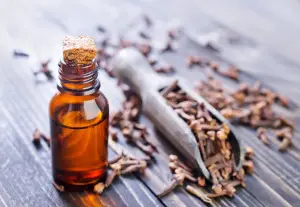What are Essential Oils?
Many people have heard of essential oils but don’t know precisely what they are and what they have to offer. In short, essential oils are natural (or organic) compounds of aroma that can be found in a range of plants, including but not limited to stems, seeds, roots, bark, and flowers.
A Reference Guide For Essential Oils
Essential oils make up a liquid that is often distilled (generally by water or steam) from various elements of plants. Unlike how their name is construed, they do not provide an oily feeling, and most oils are clear, with exception to those like orange, patchouli, or lemongrass.
Contrary to popular belief, an essential oil is not synonymous with perfume or other fragrances, despite their aromatic characteristics. Unlike essential oils, fragrance oils are manufactured artificially, and often comprise artificial compounds which don’t provide therapeutic benefits.
Keep in mind, all essential oils are not created equal. If you’re looking for the most powerful and effective benefits, therapeutic grade essential oils are the best route to follow. While they tend to be more expensive than non therapeutic options, the overriding benefits are well worth the additional costs.
[amazon box=”B06Y2H3N71″]
What Are Essential Oils Used For?
 Essential oils have many uses and they can deliver a wealth of therapeutic benefits, Such benefits are often gained by inhaling the substance or applying the oil directly to the skin.
Essential oils have many uses and they can deliver a wealth of therapeutic benefits, Such benefits are often gained by inhaling the substance or applying the oil directly to the skin.
Simply put, the list of essential oils, and the benefits they provide, is rather exhaustive.
Essential oils are generally applied by diluting the substance with a carrier oil and then applying the oil directly to the skin. After being absorbed, the benefits can be instantly realized (note, this can depend on the oil and how it is applied).
Inhalation of essential oils delivers therapeutic benefits as the oil compounds enter into the lungs and move directly into the bloodstream. Essential oils can also be bought as mixtures of multiple blends of oils. There are both advantages and disadvantages of this way of purchasing:
- Benefit: You can save money by purchasing a single essential oil blend.
- Disadvantage: You lack control in how the oil can be mixed, and it’s difficult to supplement any additional oils to the blend.
[amazon box=”B00SA5UWW8″]
Determining Price and Quality
There’s a wide range of price and quality when it comes to buying essential oils. Some factors that can impact price and quality is how rare the plant may be, where it comes from, and quality assurance measures from the manufacturer.
You can certainly find cheap essential oils throughout the web and in various retail locations, but it is recommended that you purchase pure grade essential oils — if you want to obtain maximum benefits. Essential oils can be both gorgeously and emphatically fragrant. Most likely, you’ve experienced their power if you’ve:
- Smelled the wonderful gift of a rose
- Caught a whiff of a freshly-cut mint
- Strutted past a field full of lavender
- Peeled back an orange and breathed in that crisp citrus scent
Essential oils are clean to the touch and immediately consumed by the skin. Pure grade essential oils are transparent and harbor a wide range of colors, anywhere from crystal clear to dark deep purple.
How to Use Essential Oils
There are countless uses for this 100% natural product, and several different ways for using them. Inhalation is one of the most easiest and most popular methods.
[amazon box=”B0163GBZK8″]
Many people also use essential oils in baths by mixing them with salts or an emulsifier such as sesame oil or milk. However, it is recommended that you only use mild oils for baths, such as sage or lavender, to prevent irritation of the skin. Other methods for using essential oils include:
- Massage: Applies on the skin and works with a wide range of oils.
- Candle diffusers: Easy to use and generally offers background fragrancing.
- Electric heat diffusers: Simple to maintain and can diffuse thicker oils.
- Cool air nebulizing diffusers: Optimizes therapuetic benefits for maximum impact.
